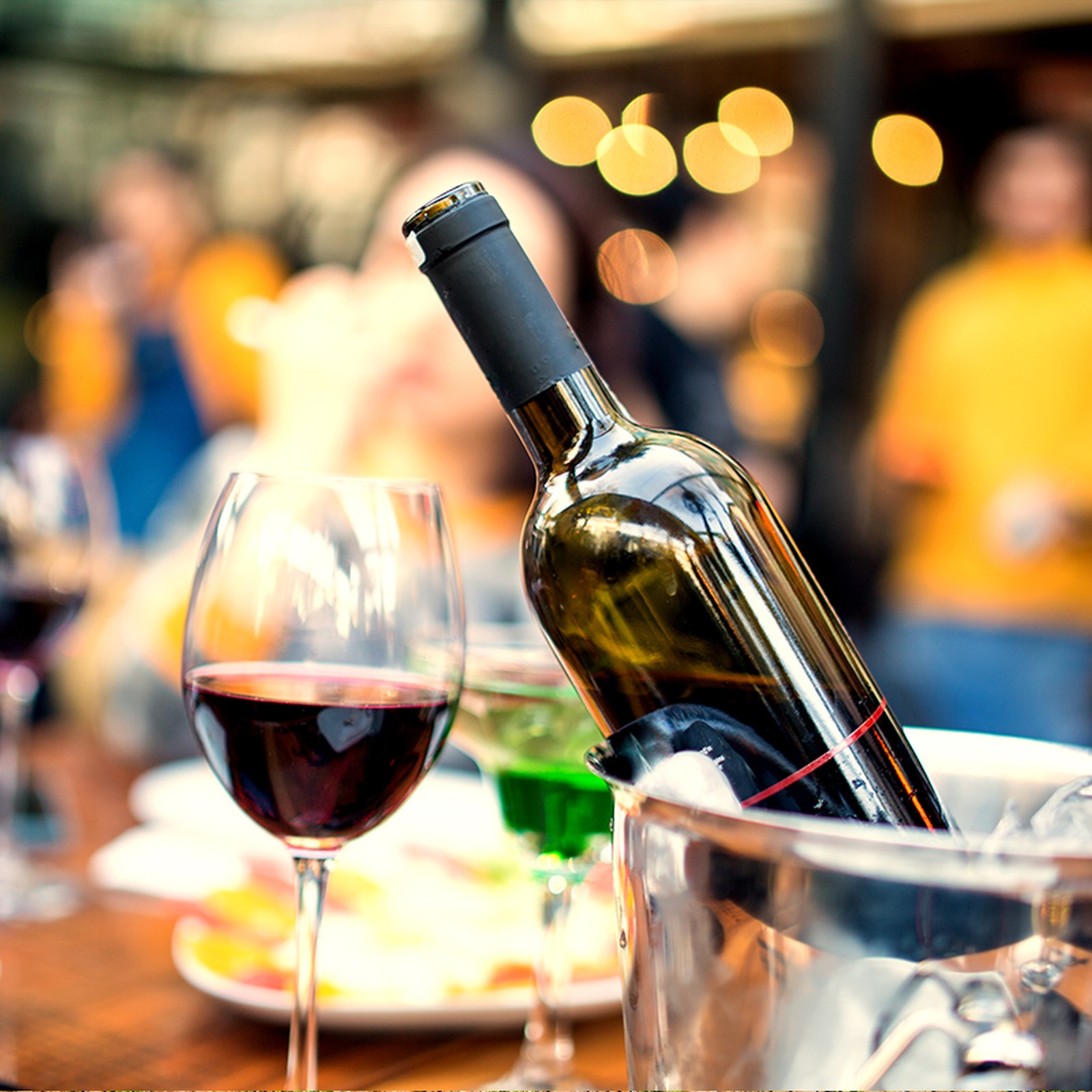
Who said that summer is equal to white wine? And who said that a good red wine can not be drunk fresh? Actually you can and you should, too. Because who comes to Puglia once a year, even in the middle of the hot season, can not afford to leave in the cellar the fruit of the native vines, that make this region one of the most important producers of wine in Italy.
Yet it is difficult to think of being able to swallow a full-bodied Primitivo or a “muscled” Nero di Troia at its classic serving temperature, in a torrid August. Furthermore, how to combine it with seasonal dishes? There is a solution and it is worth putting it into practice so as not to miss a real treat of Apulian food and wine.
The common belief, perhaps “didactic” or perhaps “old-fashioned”, that the great red wines are top in winter combined with important and juicy dishes, is increasingly crumbling. Obviously, it has its own technical reason but, with a careful study of the right balance, these same wines can become pop even in summer, if refreshed a little before being served and accompanied with lighter courses. New trends say a lot about this, but not all reds can be treated in the same way, being just freshed up to be served in the summer. When you really need to give up, we suggest you take home the much-desired Apulian bottle of wine and enjoy its content when the climate allows.
Here are two necessary premises, back to the “top” red wines that can be served with fewer degree of temperature, becoming more cheeky “pop”.
In the meantime, let’s be clear that “pop” here does not mean trivially “popular” but “less formal”, a new approach, which breaks the rules. Young, creative. This “top & pop wine” concept in the world of wine has taken for some years now a philosophical meaning and conception. Giacomo Mojoli, for years the backbone of Slow Food, freed it from the convivia of luminaries of the sector, by introducing the concept of “popping” wine, thanks to a series of events dedicated to young people and not only.
Then it is necessary to clarify the pairing of red wines with rich and juicy dishes when it’s cold, and especially how come the serving temperature of a red is always higher than that of a rosé or a white.
In the first case, it is enough to rely on the sense of taste that makes us realize that a robust, warm, aged wine, with woody or leather and spice scents, certainly does not combine with raw sea dishes, nor with a bluefish in crazy water. But not even a triumph of vegetables or orecchiette with Apulian tomatoes or even lean meat, let alone eggplant parmesan revisited from summer menu. If we don’t want to shock our taste buds, that’s the law.
But a younger, less complex, fresher but above all less tannic red wine can also find a place next to seasonal dishes. That much of the game is played precisely on tannins. For experts are those polyphenolic compounds released during maceration by grape pips, by the stalks and skins of the grape, and the more time they coexist with the must the more they give it astringency, tannicity. For non-experts, it is enough to know that tannins are equivalent to that sensation of dryness that the wine leaves in the mouth after tasting. This aspect makes tannic wine – succulent dish a certain duo. In addition, the sensation of astringency increases at low temperatures: this is why wines rich in tannins, and in general all reds, should be served at higher temperatures. And the more tannic they are, the higher the serving temperature should be. To be clear, a single variety red wine with an ABV of 13-14%, like Nero di Troia, Primitivo, the Negroamaro, should be served at a temperature of about 18°.
But if the softer tannins of a Primitivo, or the higher acidity of a Negramaro, allow you to serve it after leaving it on ice for a few minutes, when it comes to Nero di Troia you walk a razor’s edge. And there are some precautions to take to avoid cutting. Here they are.
One: if you want to cool a Nero di Troia wine, let’s be clear to cool and not to freeze (3-6 degrees less), the advice is to choose a blend softened by other vines.
Among Crifo red wines we point out: a blend with some native vines, namely Terre del Crifo Castel del Monte DOP (serving temperature 16°, alcohol by volume 12.5%); Grifone Castel del Monte DOP, softened by a quantity of Montepulciano that varies depending on the year (serving temperature 18°, alcohol by volume 12.5%).
Two: the pairings can not be wrong, worth a meal “incomprehensible” if not truly disappointing. A wine with strong tannins, exalted by the cold, can be a good solution in summer, paired with greasy rather than fat dishes: if we are talking about a Parmigiana with fried eggplant; if we eat a barbecue, with only fat meats or succulent cuts/preparations, such as the typical Apulian bombette, the pork capon, the lamb chops. All these courses sound apulian and for many are indispensable even in summer.
For the most daring ones, maybe in the cool of the high inland, it is possible even to serve a challenging Squarcione Appassimento Rosso Igp Crifo, at one-two degrees less. But it only works with the mixed grilled Apulian meat.
